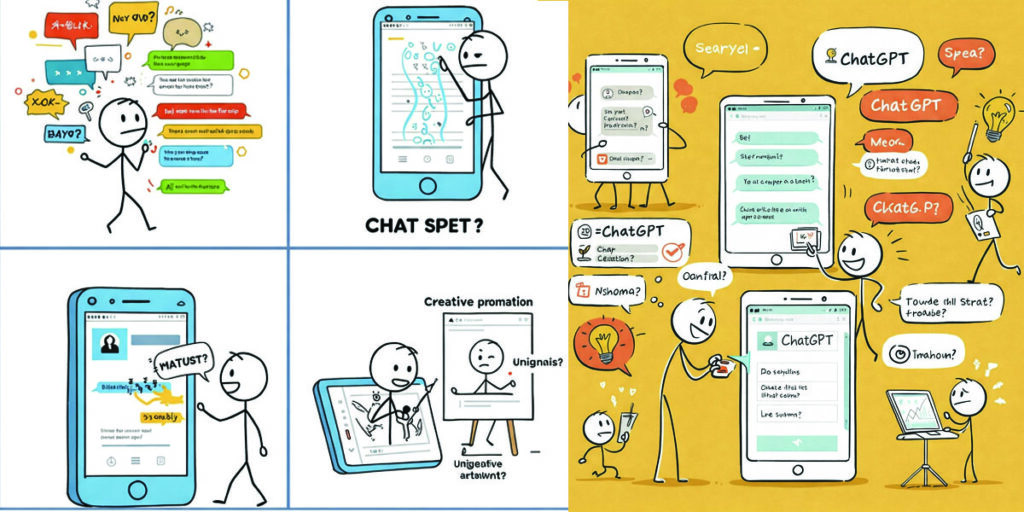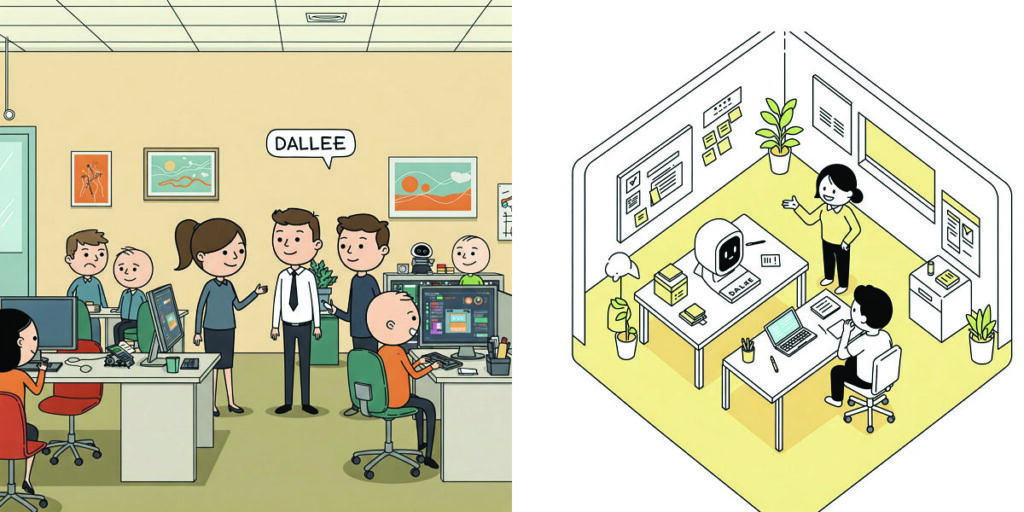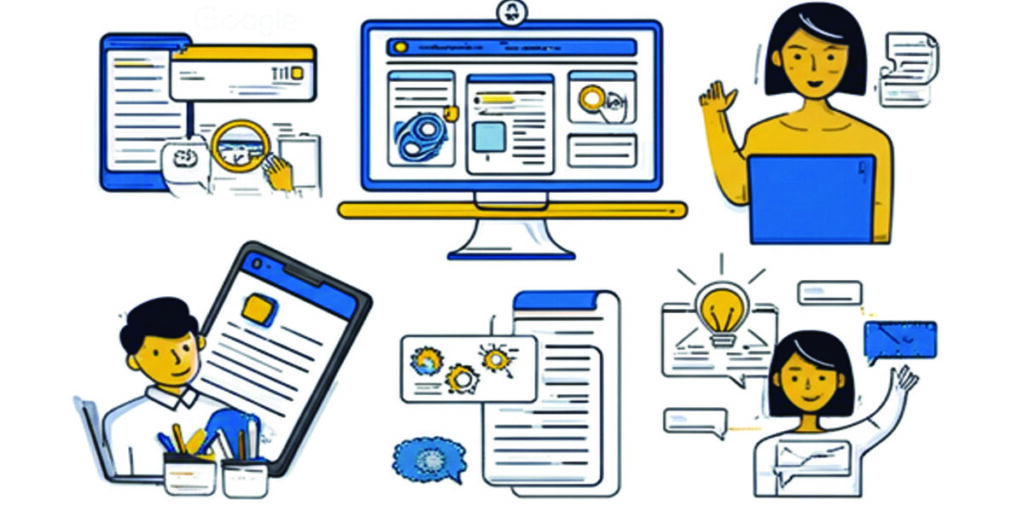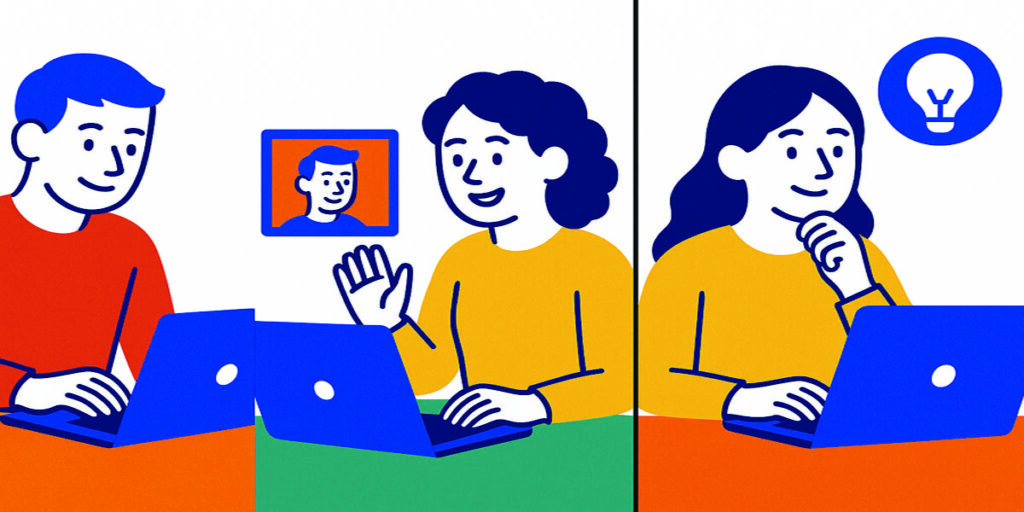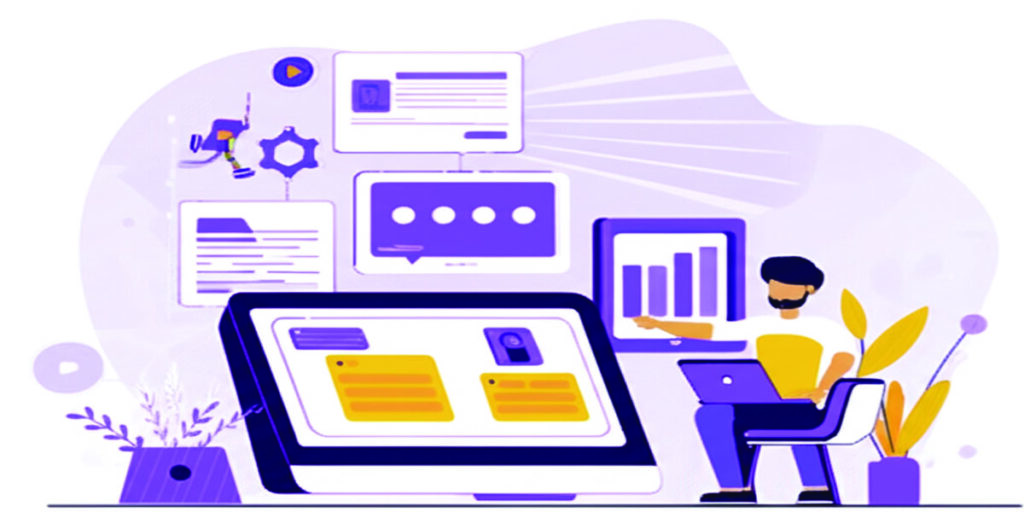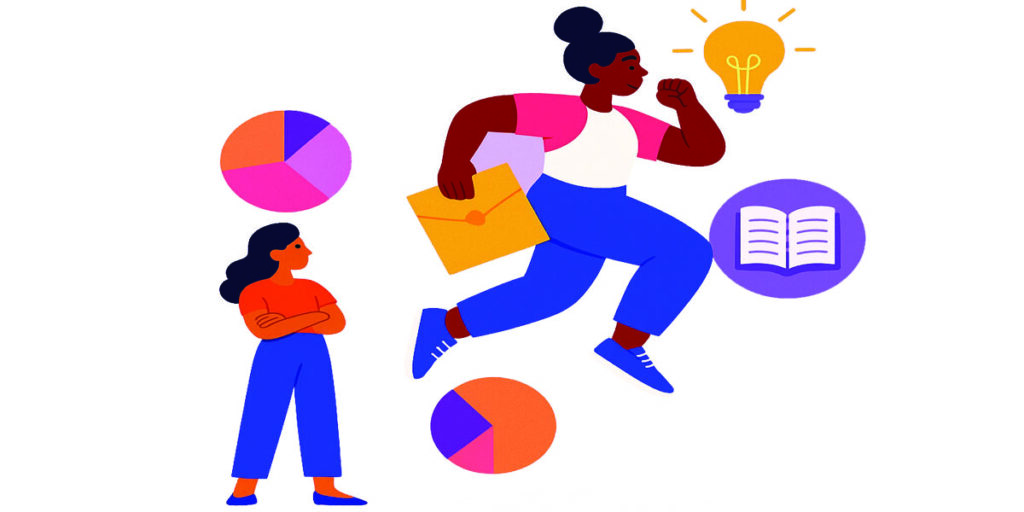Professor Anya Sharma adjusted her spectacles, the morning sun casting long shadows across the antique map spread on her desk. Beside it lay her grandmother’s journal, its aged pages whispering tales of scientific exploration. Today, Anya embarked on a similar expedition, charting the practical landscape of ChatGPT, OpenAI’s versatile language model. “Let us illuminate the path to harnessing this digital collaborator,” she murmured, referencing a digital note on her tablet, a link to OpenAI’s official documentation.
Venturing into the Digital Realm: Access and Interaction
The initial step in engaging with ChatGPT is accessing its digital interface. Currently, the primary point of interaction is through OpenAI’s web platform.
- Account Creation (if required): Navigate your web browser to the official OpenAI website (https://openai.com/). Locate options such as “Try ChatGPT” or “Sign Up.” New users will need to create an account, typically involving email verification and password creation. Phone number verification might also be required. Upon successful registration, access to the ChatGPT interface will be granted.
- Interface Overview: The user interface is designed for ease of use. A text input field is usually located at the bottom, serving as the gateway for your prompts. Above this field, the main conversation window displays the history of your interactions with ChatGPT. Your inputs and the AI’s responses are visually distinct, facilitating a clear dialogue. A sidebar on the left might offer options for initiating new chats, reviewing past conversations, and adjusting settings or accessing model information (as detailed in OpenAI’s support resources).
- Initiating Dialogue: To commence interaction, type your query, instruction, or request into the text input field and press “Enter” or click the designated send icon (often resembling a paper airplane). ChatGPT will then process your input and generate a response, which will appear within the conversation window.
The Art of Prompting: Guiding the AI’s Linguistic Prowess
The effectiveness of ChatGPT hinges on the quality and precision of your prompts. Consider your prompt as a directive, guiding the AI’s extensive knowledge and language generation capabilities. Key elements for crafting effective prompts include:
- Clarity and Conciseness: Articulate your request directly, avoiding ambiguity. The model performs optimally when it precisely understands your objective. Instead of a broad query like “Tell me about history,” try “Explain the primary causes of the Peloponnesian War, citing at least two ancient sources if possible (though ChatGPT’s knowledge cut-off might limit direct source citation).”
- Contextual Foundation: Provide the necessary background information for ChatGPT to fully grasp your request. When asking for a product description, furnish details about the product, its features, and the intended audience. For example, instead of “Write a product description,” try “Write a compelling product description for our new line of organic cotton baby clothes. Emphasize their softness, hypoallergenic properties, and sustainable manufacturing process, targeting environmentally conscious parents.”
- Format Specification: Clearly indicate the desired output format. Do you require a list, a paragraph, a table, a poem, a script, or a specific document structure? For instance, “Create a numbered list outlining the steps involved in baking a sourdough loaf, suitable for a beginner,” or “Write a short haiku about the tranquility of a forest at dawn.”
- Tone and Style Definition: Specify the desired tone and style of the response. Should it be formal, informal, humorous, persuasive, technical, or creative? For example, “Explain the principles of quantum entanglement in a concise and technical style, suitable for physics undergraduates,” or “Write a lighthearted and engaging social media post announcing a flash sale on our website.”
- Length Constraints (if applicable): If a specific length is required, state it in your prompt. This is useful for social media updates, summaries, or when space is limited. For example, “Summarize the main arguments presented in this article (provide the article text) in no more than 200 words,” or “Write a tweet announcing our upcoming webinar.”
- Requesting Examples: If unsure about the expected output, ask ChatGPT for illustrative examples. For instance, “Give me a few examples of effective subject lines for a marketing email announcing a new product.”
- Iterative Refinement: Don’t hesitate to refine your prompts based on initial responses. If the first answer isn’t quite right, rephrase your prompt, provide more detail, or request a different perspective. This iterative process of prompting and refining is crucial for maximizing ChatGPT’s potential (as highlighted in various user guides and tutorials).
- Keyword Integration: Incorporate relevant keywords into your prompts to help ChatGPT focus on the specific topic of interest. For example, when researching the impact of artificial intelligence on the job market, include keywords like “AI,” “automation,” “employment,” and “future of work.”
- Audience Specification: If the output is intended for a particular audience, mention it in your prompt. This helps ChatGPT tailor its language and complexity accordingly. For example, “Explain the concept of cryptocurrency to someone with no prior knowledge of finance or technology,” or “Write a persuasive speech for a panel of investors about the disruptive potential of our new renewable energy technology.”
- Encouraging Creativity: For creative endeavors, prompt ChatGPT to be imaginative and explore novel ideas. Ask it to generate unique concepts, explore unconventional scenarios, or combine disparate elements. For instance, “Come up with some imaginative futuristic transportation methods and briefly describe their mechanics,” or “Write a short fantasy story set in a world where emotions manifest as physical colors.”
Practical Applications Across Diverse Fields:
ChatGPT’s adaptability allows for its application across a broad spectrum of tasks and industries. Consider these practical examples:
1. Education and Learning:
- Personalized Tutoring and Clarification: Request ChatGPT to explain intricate concepts in a simplified manner, offering diverse perspectives or analogies to enhance comprehension. For example, “Explain the process of cellular respiration using an analogy related to a car engine.”
- Learning Assistance (Ethical Use): While direct completion of assignments is discouraged, ChatGPT can aid in understanding concepts, brainstorming essay ideas, or verifying factual information (always cross-reference with reliable sources like academic databases or reputable encyclopedias). For example, “Can you outline the main causes of World War I and briefly explain each?”
- Language Acquisition: Engage in conversational practice in a new language, seek explanations of grammatical rules, or request translations (referencing online dictionaries and language learning resources for verification). For example, “Translate the sentence ‘I would like to order a coffee, please’ into Italian and explain the grammatical structure.”
- Research Support (with Caution): Generate initial research topic ideas, identify relevant keywords, or obtain summaries of complex academic papers (always verify information with scholarly databases and peer-reviewed publications). For example, “Suggest some potential research questions related to the ethical implications of facial recognition technology.”
2. Content Creation and Writing:
- Efficient Email and Letter Drafting: Quickly generate professional or personal correspondence by providing essential details and the desired tone. For example, “Write a formal email to a potential research participant outlining the study’s purpose, procedures, and ethical considerations (referencing standard ethical guidelines for research).”
- Engaging Social Media Content Generation: Create compelling posts, captions, and relevant hashtags for various social media platforms (adhering to platform guidelines and best practices). For example, “Write three different engaging tweet options announcing a limited-time discount on our online courses, including relevant hashtags.”
- Blog Post and Article Development: Brainstorm compelling topics, create structured outlines, or even generate initial drafts for blog posts and articles (always ensuring originality and proper attribution if incorporating external information). For example, “Suggest five engaging blog post topics related to the benefits of mindfulness in the workplace.”
- Creative Writing Exploration: Explore narrative ideas, develop character profiles, write poems, scripts, or song lyrics. For example, “Write a short dialogue scene between two characters in a dystopian future discussing the importance of memories.”
- Concise Summarization: Condense lengthy documents, articles, or reports into brief summaries. For example, “Summarize the key findings of this World Health Organization report on the global impact of air pollution (provide the report text) in no more than 250 words.”
3. Business and Productivity Enhancement:
- Innovative Idea Generation: Brainstorm novel solutions, marketing strategies, or business names. For example, “Brainstorm ten creative and memorable names for a new sustainable food delivery service.”
- Preliminary Market Research: Gather initial information on industry trends, competitor analysis, or customer preferences (always verifying with reliable market research reports and industry publications). For example, “What are some emerging trends in the sustainable packaging industry?”
- Efficient Customer Service Support: Draft responses to frequently asked questions or generate helpful information for customers (ensuring accuracy and adherence to company policies). For example, “Write a template response to a customer inquiring about the status of their online order.”
- Streamlined Meeting Management: Assist in creating structured meeting agendas or summarizing key discussion points and action items. For example, “Create a potential agenda for a project team meeting focused on the upcoming marketing campaign.”
- Compelling Presentation Development: Generate presentation outlines, suggest key talking points, or even help craft engaging narratives for presentations. For example, “Suggest three different compelling opening hooks for a presentation on the future of remote work.”
4. Personal Assistance and Everyday Organization:
- Efficient Planning and Organization: Get assistance with travel itineraries, event planning, or creating structured to-do lists. For example, “Suggest a detailed three-day itinerary for a cultural exploration of Kyoto, Japan, including transportation options.”
- Culinary Exploration: Find recipes based on available ingredients or specific dietary requirements. For example, “Suggest a vegan and gluten-free recipe for a hearty lentil soup.”
- Personalized Recommendation Systems: Request recommendations for books, movies, music, or restaurants based on your stated preferences. For example, “Recommend three critically acclaimed science fiction novels published in the last five years that explore themes of artificial consciousness.”
- Skill Acquisition Guidance: Obtain introductory explanations of new concepts or guidance on relevant learning resources. For example, “What are some reputable online platforms for learning the basics of graphic design?”
Advanced Prompting Strategies for Enhanced Interaction:
Beyond fundamental prompting, several advanced techniques can unlock more sophisticated interactions with ChatGPT:
- Role Emulation: Instruct ChatGPT to adopt a specific persona or role. This can be valuable for simulations, creative writing exercises, or practicing different communication styles. For example, “You are a seasoned historian specializing in the Roman Empire. Explain the causes of its decline as if speaking to a group of undergraduate history students.”
- Chain-of-Thought Facilitation: For intricate reasoning tasks, guide ChatGPT through the problem-solving process step-by-step. Decompose the problem into smaller, manageable parts and ask the model to address each sequentially. This can enhance the accuracy and logical coherence of the final answer (as explored in research on improving LLM reasoning). For example, instead of asking “Solve this complex logic puzzle,” you might ask: “First, identify the key constraints presented in the puzzle. Second, deduce the possible initial states based on these constraints. Third, apply logical rules to eliminate impossible scenarios. Finally, arrive at the solution.”
- Few-Shot Learning via Examples: Provide ChatGPT with a few examples of the desired input-output format. This can significantly improve the model’s understanding of the task and lead to responses that better align with your expectations (a key technique in meta-learning for LLMs). For example, you could provide a few examples of customer reviews and their corresponding sentiment (positive/negative) before asking ChatGPT to classify the sentiment of a new, unseen review.
- Model-Specific Prompt Engineering: Recognize that different versions or fine-tuned models of ChatGPT (or other LLMs) might exhibit varying responses to the same prompts. Experiment with different phrasing and techniques to discern how a specific model performs optimally for your desired tasks (as documented in model-specific API guides and research papers).
- Technique Combination: Integrate multiple prompting techniques to achieve more nuanced and targeted outcomes. For example, you could instruct ChatGPT to role-play as a career counselor and then use chain-of-thought prompting to guide a user through the steps of writing a compelling resume.
Ethical Considerations and Responsible Utilization:
While ChatGPT is a potent tool, it’s imperative to acknowledge its limitations and employ it responsibly:
- Accuracy Verification and Fact-Checking: ChatGPT’s responses are generated based on its training data, which may contain inaccuracies or biases. Always cross-verify critical information with reputable and reliable sources (such as academic databases, government publications, and expert-reviewed websites).
- Originality and Plagiarism Avoidance: Do not present ChatGPT-generated content as your own original work. Utilize it as a tool to augment your writing process, but always ensure that your final output reflects your own analysis, insights, and proper attribution if incorporating external information (adhering to academic integrity standards and copyright laws).
- Bias Awareness and Mitigation: Be cognizant that the training data may reflect societal biases, which can inadvertently manifest in ChatGPT’s responses. Critically evaluate the output and actively seek diverse perspectives and information from unbiased sources.
- Privacy and Data Security Practices: Exercise caution regarding the information you share with ChatGPT, particularly sensitive personal data. Familiarize yourself with OpenAI’s privacy policies and data handling practices.
- Cultivating Independent Skills: Avoid over-reliance on ChatGPT. It is intended to enhance human capabilities, not supplant them entirely. Continuously develop your own critical thinking, writing, and creative skills.
Professor Anya’s Concluding Reflections:
Anya carefully capped her pen, her gaze lingering on the digital notes displayed on her tablet, a gateway to the vast resources of the internet. The potential of ChatGPT was undeniable, a digital loom capable of weaving intricate narratives and illuminating complex ideas. Yet, she understood that its true value lay not just in its capabilities, but in the wisdom and responsibility with which it was employed.
“The essence, dear journal,” she wrote, her words echoing the spirit of her grandmother’s scientific inquiries, “lies in informed engagement. To approach this technology with both wonder and a discerning intellect. To recognize its power as a tool for augmentation, not automation of thought. And to always, always, ground its output in the bedrock of verifiable knowledge.”
The integration of AI into the fabric of human endeavor was an ongoing evolution. Tools like ChatGPT offered a tantalizing glimpse into a future of enhanced collaboration, but the onus remained on humanity to navigate this transformative landscape with ethical awareness and a commitment to truth and originality.
